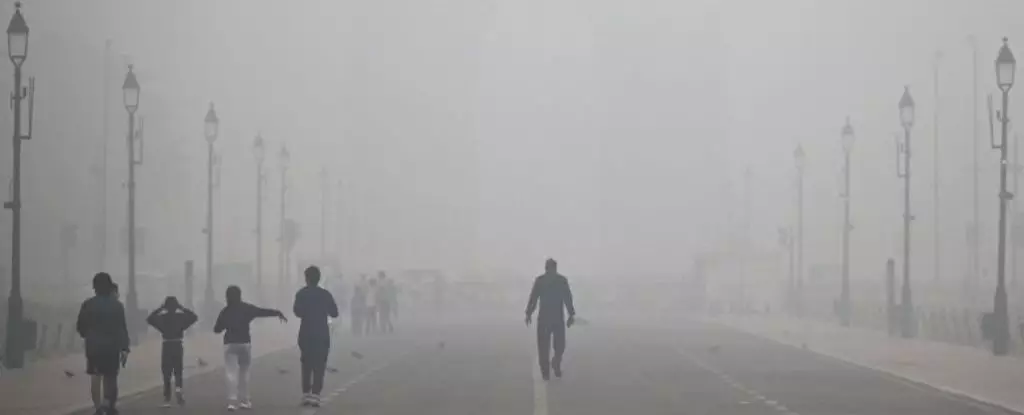In recent years, an unsettling trend has emerged—lung cancer is increasingly diagnosed in individuals who have never smoked. Traditionally, tobacco use has been the primary culprit behind lung tumors; however, mounting evidence suggests that environmental factors, particularly air pollution, are playing a more significant role than previously understood. This shift not only challenges established perceptions but also underscores an urgent public health issue: our air, seemingly innocuous, may be secretly sabotaging our lungs at a genetic level.
The incidence of lung cancer in non-smokers now accounts for a noteworthy proportion of new cases worldwide, ranging from 10% to 20%. Despite this, the scientific community lacked a clear understanding of how environmental exposures contribute to cancer development in these populations. The discovery that ambient air pollution possesses mutagenic potential in lung tissues offers a paradigm-shifting perspective—air pollution isn’t a mere irritant but possibly an active participant in carcinogenesis, akin to the harm caused by tobacco smoke.
This revelation beckons a reevaluation of air quality standards, emphasizing that clean air should be recognized as a fundamental component of disease prevention, not just an environmental concern. It indicates that urbanization, industrialization, and unchecked pollution levels directly jeopardize human health in ways that extend beyond respiratory discomfort—their insidious effects may lie deep within our DNA.
Deciphering the Molecular Footprint of Air Pollution
A groundbreaking international study has traced the genetic fingerprints left by air pollution in lung tumors of non-smokers, providing compelling evidence of its mutagenic influence. Analyzing the genomes of 871 patients across four continents, researchers identified common DNA mutation signatures associated with high pollution exposure. They found that individuals living in heavily polluted environments exhibited a markedly increased presence of specific mutational patterns, notably SBS4, which is also prevalent among smokers.
These molecular insights highlight that airborne particulates—comprising soot, smog, and fine particulate matter—may facilitate genetic alterations similar to those induced by tobacco carcinogens. Moreover, the research uncovered that longer-term exposure corresponds with a greater burden of mutations such as TP53 and EGFR gene alterations, which are hallmarks of lung carcinogenesis. The correlation signals that the more polluted one’s environment, the higher the genetic damage, and consequently, the greater the cancer risk.
Perhaps most startling is the discovery of shorter telomeres in individuals exposed to high pollution levels. Shortened telomeres are associated with accelerated cellular aging and genomic instability, both of which contribute to tumor formation. The finding underscores that air pollution does not merely cause transient inflammation but may actively accelerate biological aging and mutation accumulation, creating fertile ground for cancer development.
These molecular revelations challenge the olfactory notion that dirty air is only a nuisance. Instead, they suggest that pollution acts as a silent mutagen, subtly rewriting our genetic code and tipping the scales toward malignancy without the need for cigarette smoke.
Implications and Unanswered Questions: Navigating a Complex Landscape
While the association between air pollution and genetic mutations brings clarity, several complex questions remain. For one, the current research relies heavily on regional pollution data, which limits precision in individual exposure assessment. This means we cannot definitively quantify how much particulate matter an individual inhales daily or the specific timing of exposure relative to mutation development.
Additionally, the potential influence of secondhand smoke, though less potent, cannot be entirely dismissed. Its contribution appears minimal compared to pollution, but the possibility that low-level exposure accumulates over time warrants further scrutiny. The subtlety of these effects highlights the limitations inherent in epidemiological studies and underscores the need for more refined, personalized assessments.
One of the most intriguing findings involves the SBS40a mutational signature, which seems unrelated to known environmental factors or cigarette smoke. Its prevalence suggests internal cellular processes or yet-to-be-identified exposures might also shape the landscape of lung mutations. Investigating these mysterious signatures could lead to groundbreaking discoveries about lung cancer etiology, especially in non-smoker populations.
This body of evidence positions air pollution not merely as an environmental hazard but as a direct influencer of our genetic integrity. It suggests that policies aimed at reducing pollution could have profound implications for cancer prevention. Yet, implementing such measures is no straightforward task, given economic, industrial, and political considerations that often impede environmental reforms. The challenge lies in translating these scientific insights into concrete actions that can effectively protect public health.
Furthermore, understanding the molecular similarities between pollution-induced mutations and those caused by smoking raises questions about whether certain non-smoker lung cancers should be classified or treated differently. Are these tumors biologically comparable, and do they respond similarly to existing therapies? These are critical considerations for personalized medicine and could reshape clinical approaches to lung cancer management.
The path forward demands a multifaceted effort. Expanded research tracking individual pollutant exposure, coupled with genetic profiling, can deepen our understanding of causality. Public policies must be reevaluated with a focus on air quality improvements, especially in densely populated urban centers. Only through a comprehensive strategy that integrates scientific insight, public health policy, and individual awareness can we begin to stem the tide of pollution-related lung cancers and safeguard future generations.

